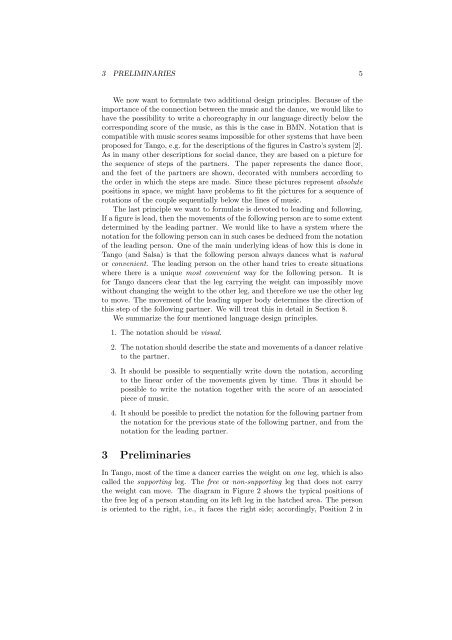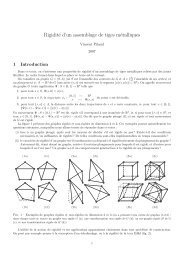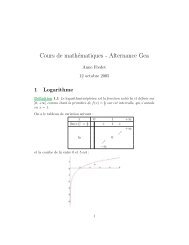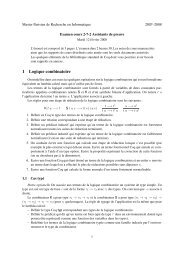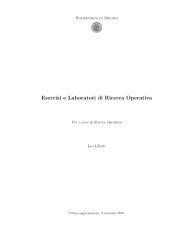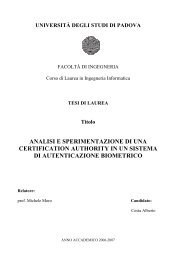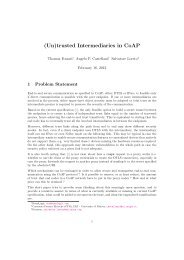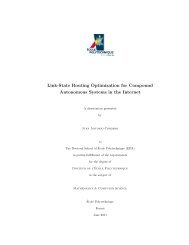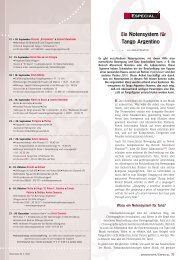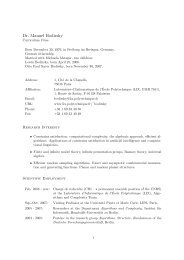Create successful ePaper yourself
Turn your PDF publications into a flip-book with our unique Google optimized e-Paper software.
3 PRELIMINARIES 5<br />
We now want to <strong>for</strong>mulate two additional design principles. Because of the<br />
importance of the connection between the music and the dance, we would like to<br />
have the possibility to write a choreography in our language directly below the<br />
corresponding score of the music, as this is the case in BMN. <strong>Notation</strong> that is<br />
compatible with music scores seams impossible <strong>for</strong> other systems that have been<br />
proposed <strong>for</strong> <strong>Tango</strong>, e.g. <strong>for</strong> the descriptions of the figures in Castro’s system [2].<br />
As in many other descriptions <strong>for</strong> social dance, they are based on a picture <strong>for</strong><br />
the sequence of steps of the partners. The paper represents the dance floor,<br />
and the feet of the partners are shown, decorated with numbers according to<br />
the order in which the steps are made. Since these pictures represent absolute<br />
positions in space, we might have problems to fit the pictures <strong>for</strong> a sequence of<br />
rotations of the couple sequentially below the lines of music.<br />
The last principle we want to <strong>for</strong>mulate is devoted to leading and following.<br />
If a figure is lead, then the movements of the following person are to some extent<br />
determined by the leading partner. We would like to have a system where the<br />
notation <strong>for</strong> the following person can in such cases be deduced from the notation<br />
of the leading person. One of the main underlying ideas of how this is done in<br />
<strong>Tango</strong> (and Salsa) is that the following person always dances what is natural<br />
or convenient. The leading person on the other hand tries to create situations<br />
where there is a unique most convenient way <strong>for</strong> the following person. It is<br />
<strong>for</strong> <strong>Tango</strong> dancers clear that the leg carrying the weight can impossibly move<br />
without changing the weight to the other leg, and there<strong>for</strong>e we use the other leg<br />
to move. The movement of the leading upper body determines the direction of<br />
this step of the following partner. We will treat this in detail in Section 8.<br />
We summarize the four mentioned language design principles.<br />
1. The notation should be visual.<br />
2. The notation should describe the state and movements of a dancer relative<br />
to the partner.<br />
3. It should be possible to sequentially write down the notation, according<br />
to the linear order of the movements given by time. Thus it should be<br />
possible to write the notation together with the score of an associated<br />
piece of music.<br />
4. It should be possible to predict the notation <strong>for</strong> the following partner from<br />
the notation <strong>for</strong> the previous state of the following partner, and from the<br />
notation <strong>for</strong> the leading partner.<br />
3 Preliminaries<br />
In <strong>Tango</strong>, most of the time a dancer carries the weight on one leg, which is also<br />
called the supporting leg. The free or non-supporting leg that does not carry<br />
the weight can move. The diagram in Figure 2 shows the typical positions of<br />
the free leg of a person standing on its left leg in the hatched area. The person<br />
is oriented to the right, i.e., it faces the right side; accordingly, Position 2 in


